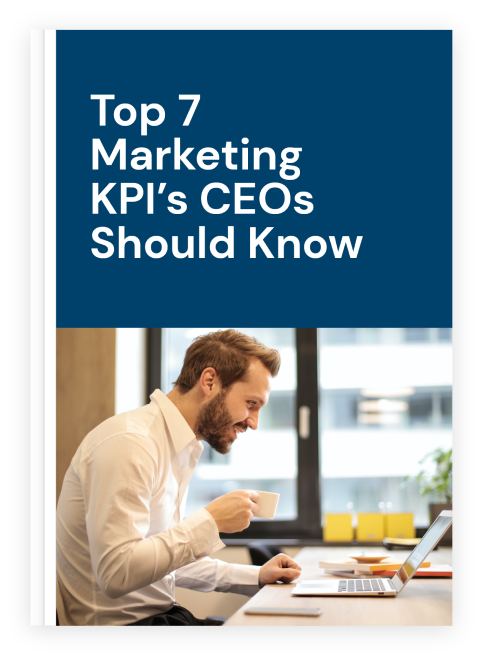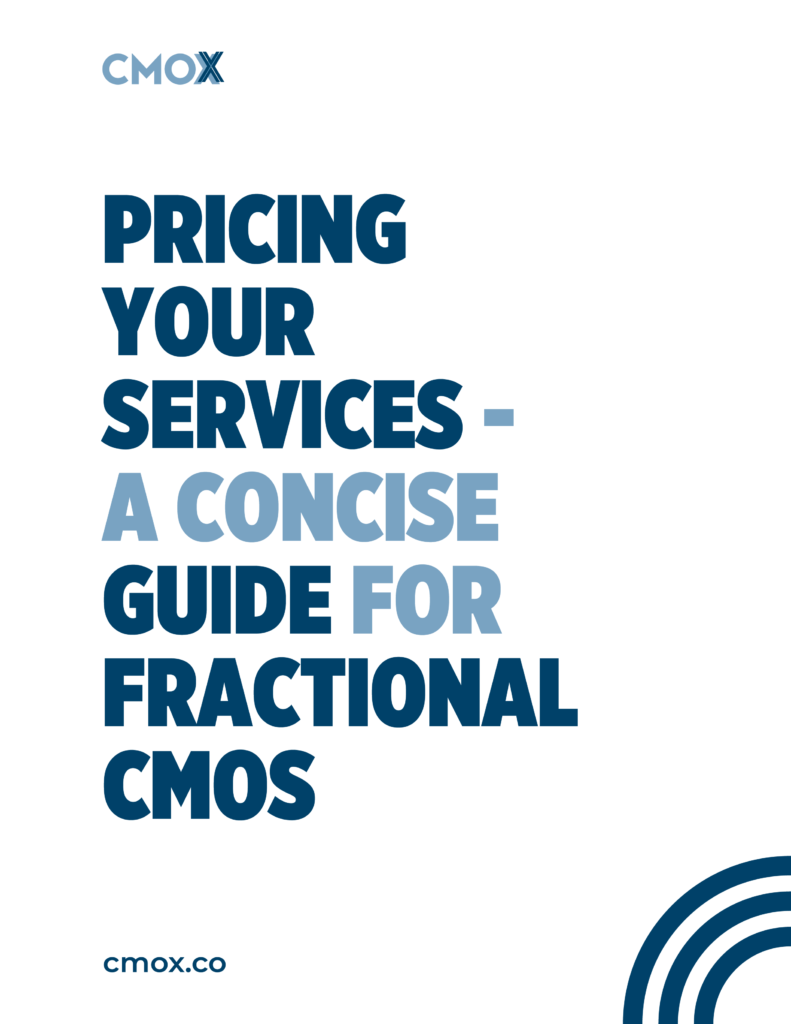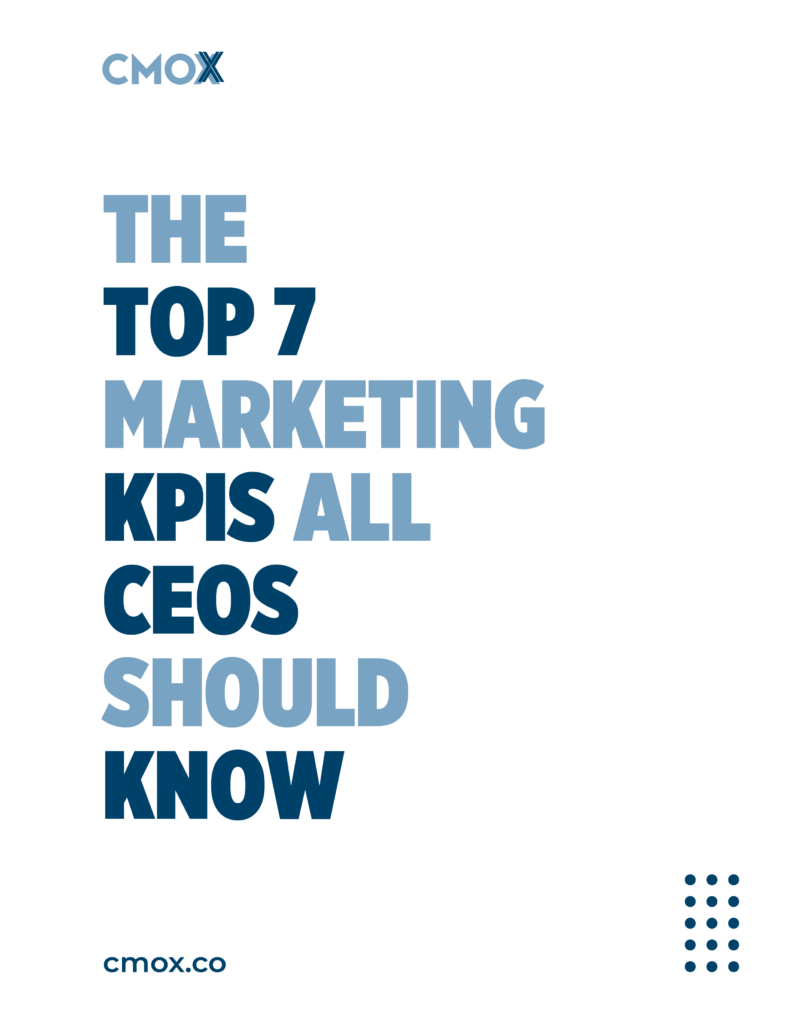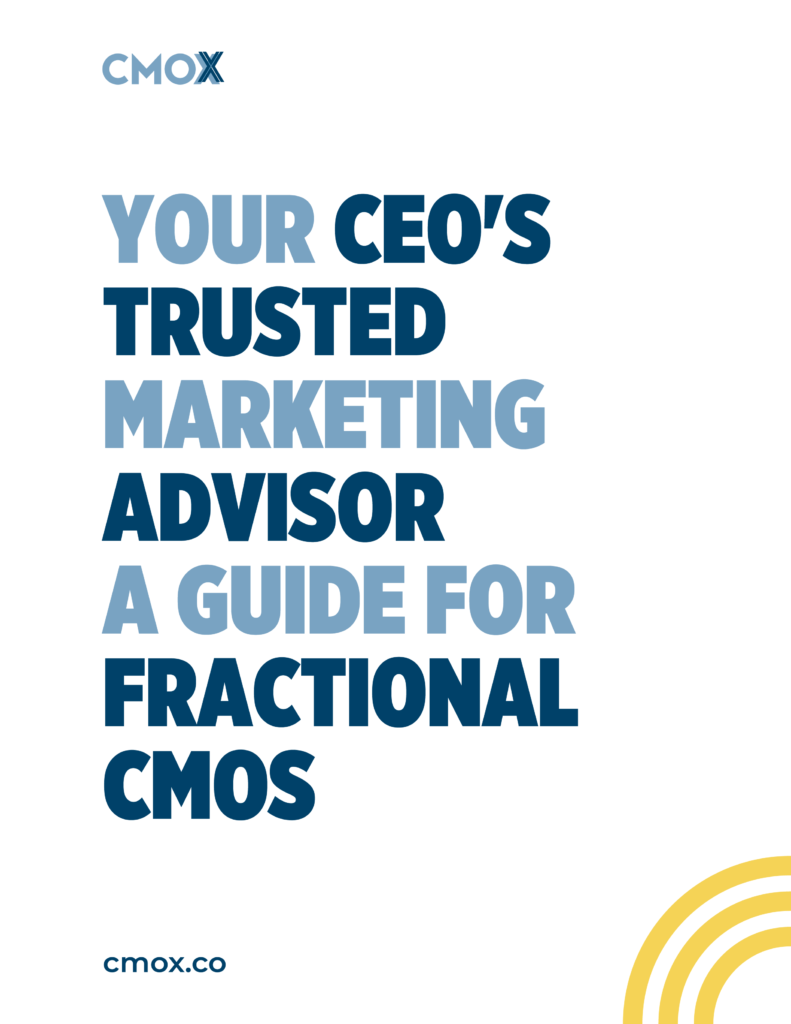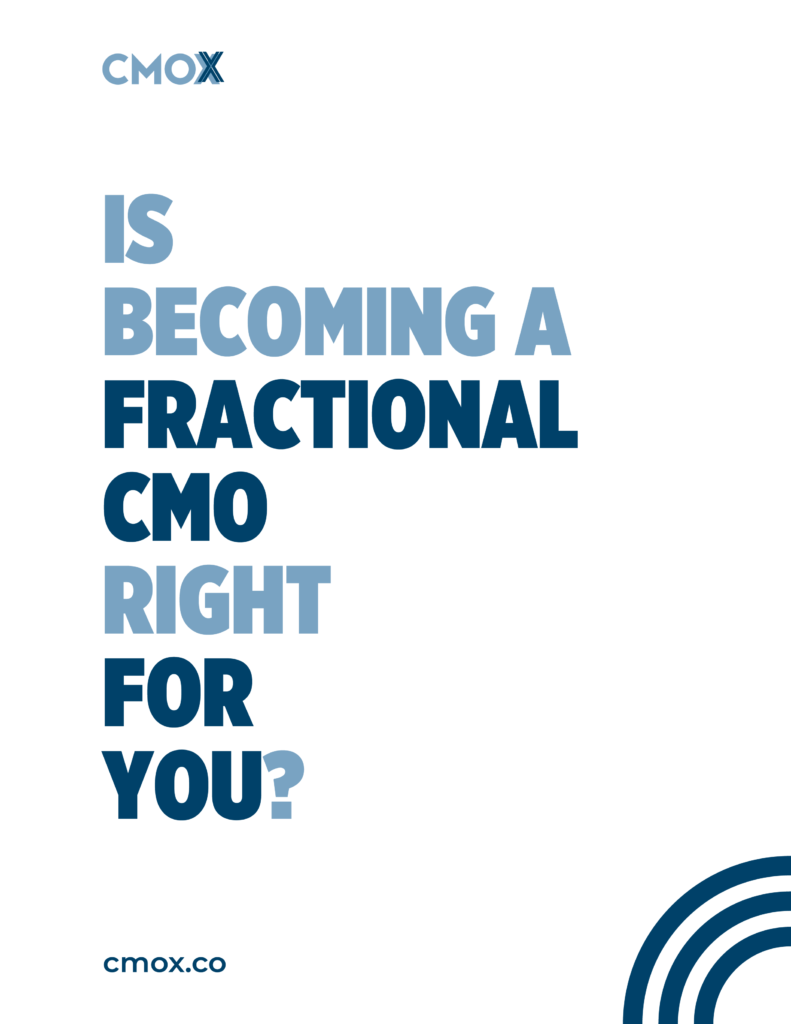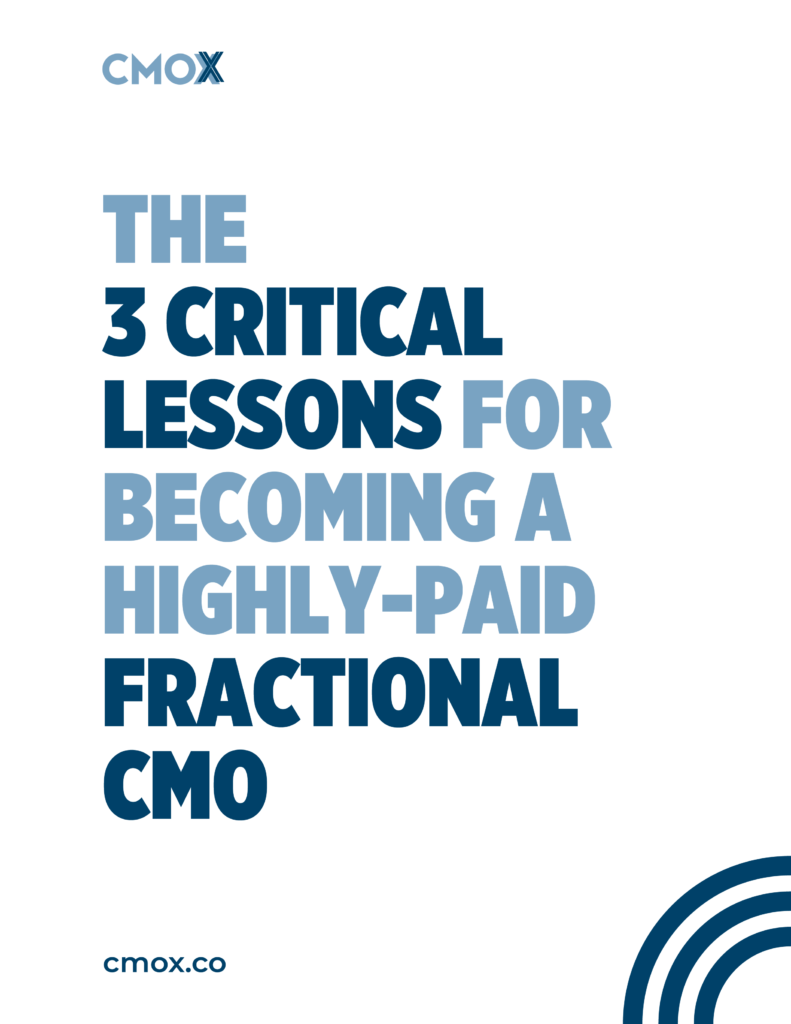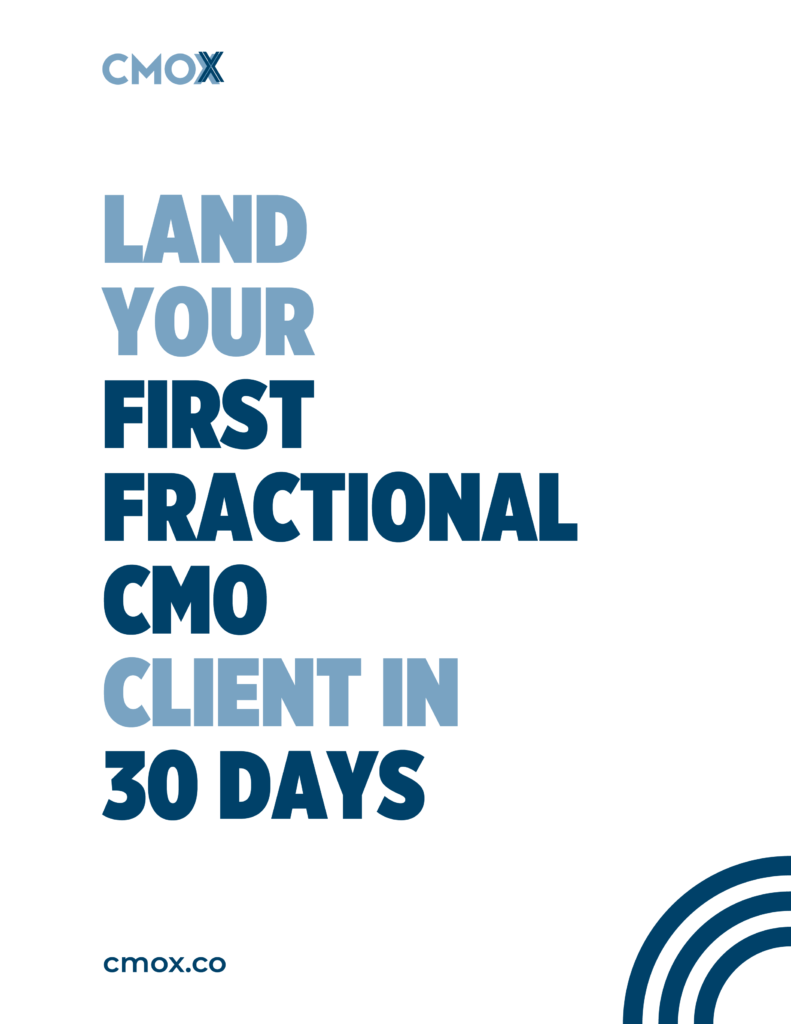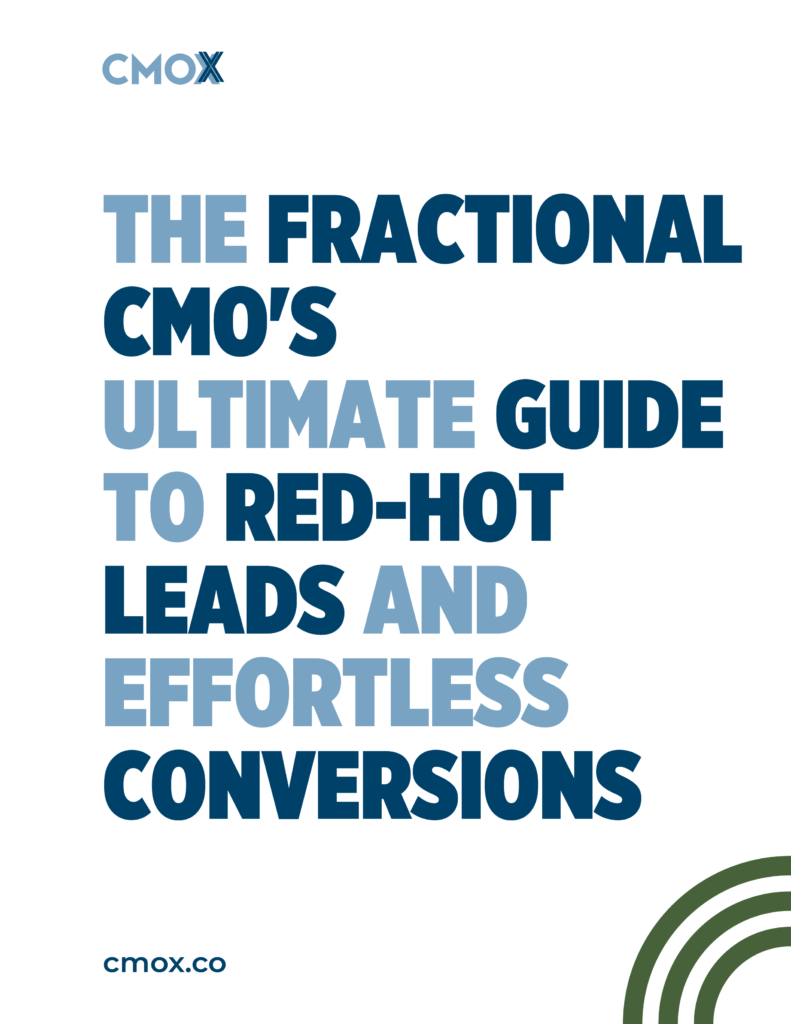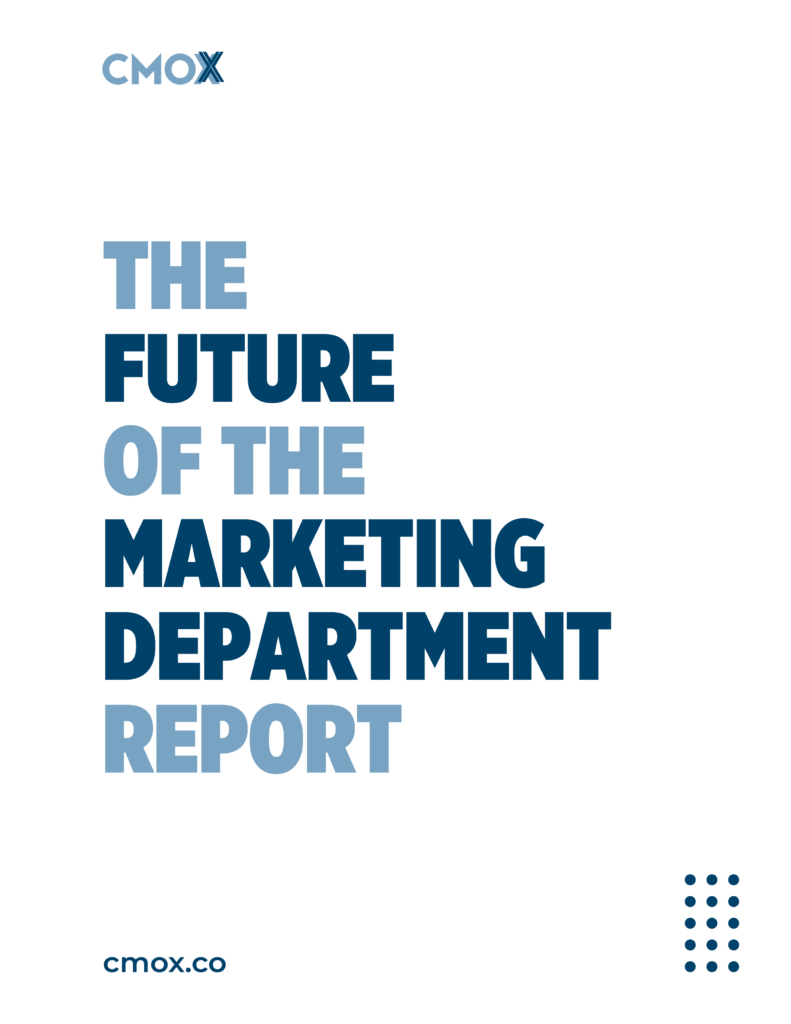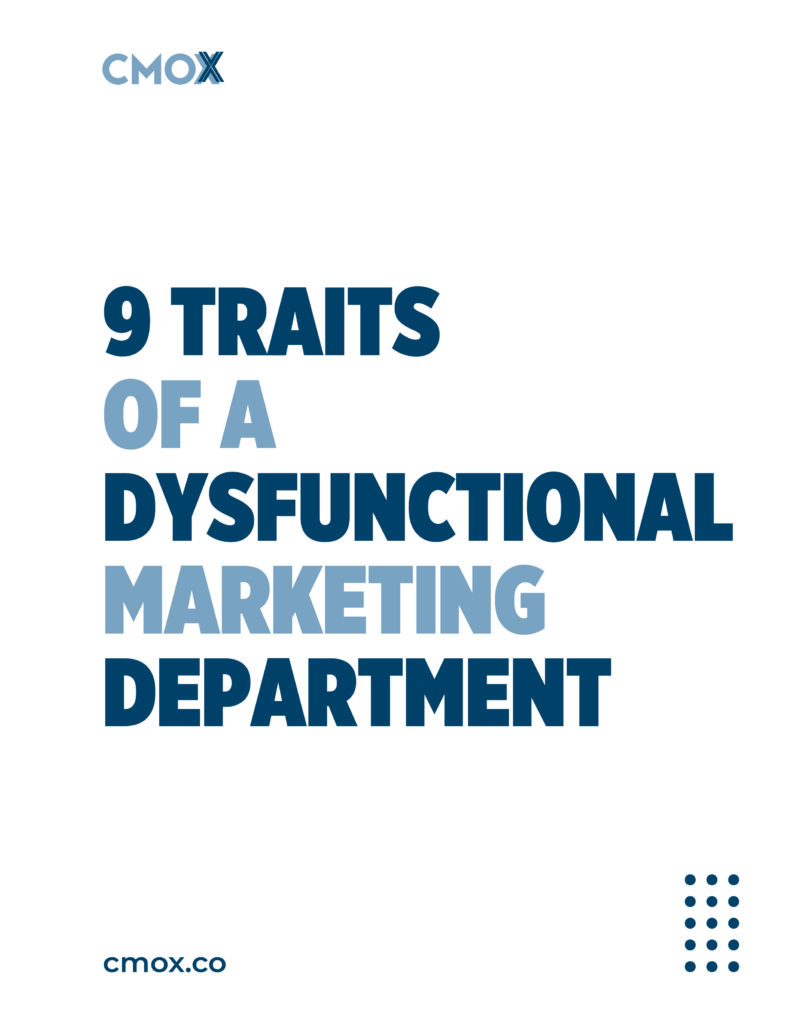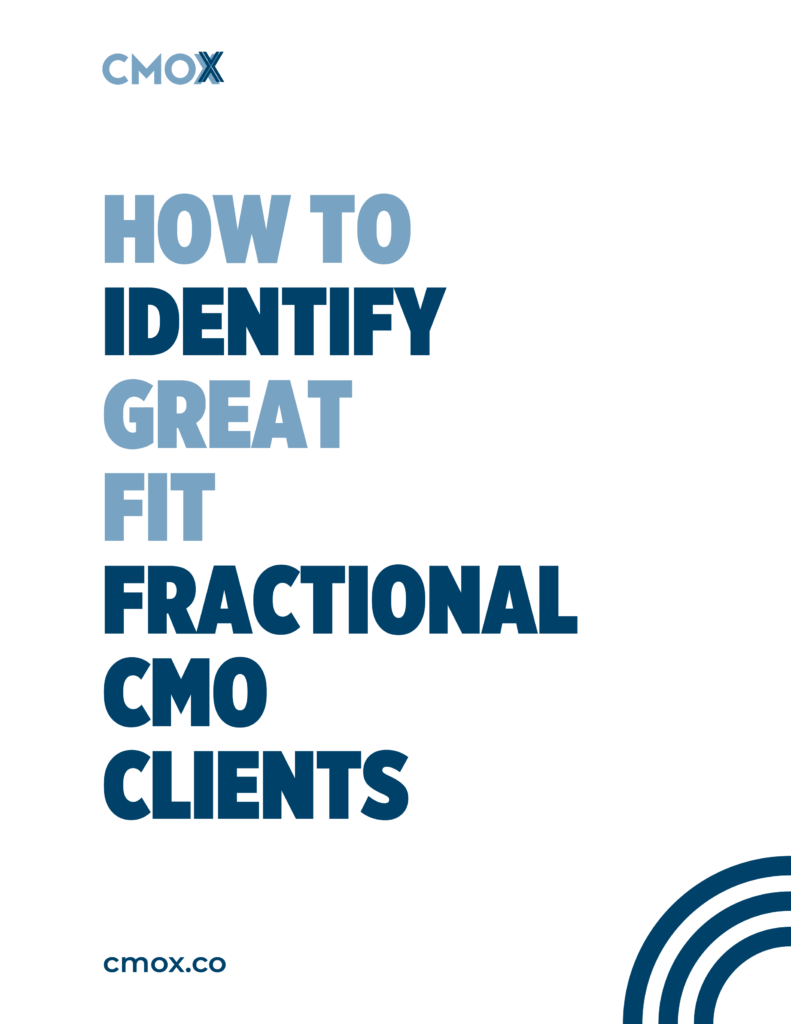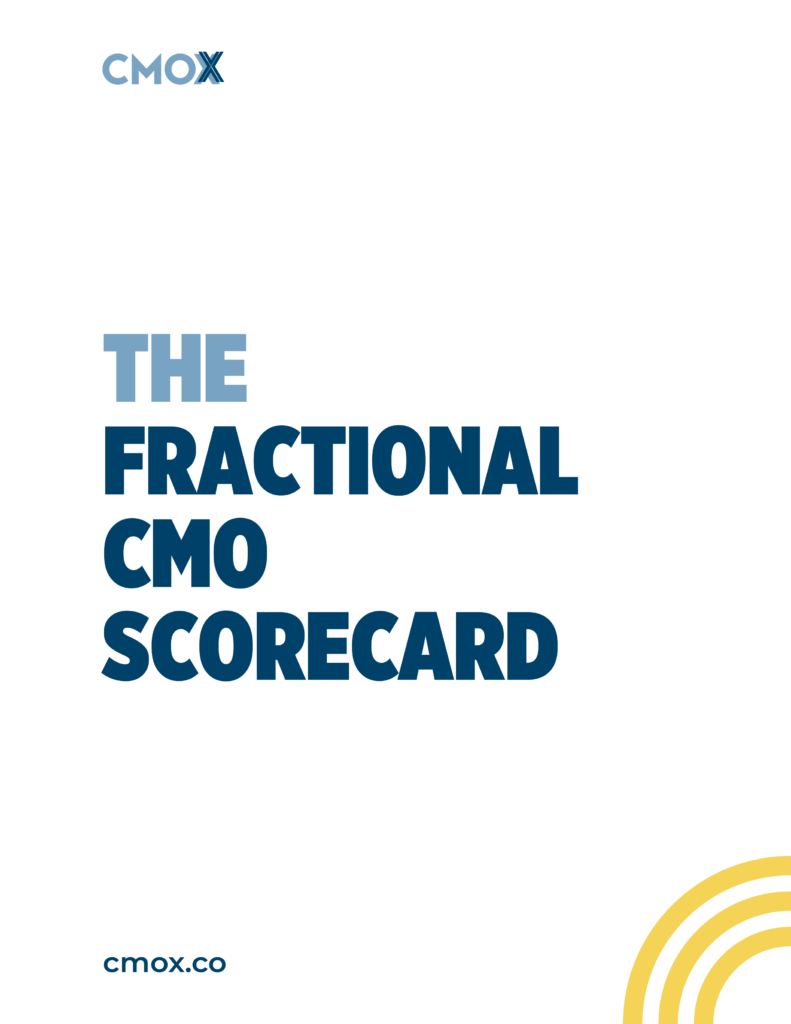Ep #102: Transition from Selling Fractional CMO Services to being the Buyer of Great Opportunities

In this episode, Casey breaks down one of the most transformative mindset shifts for any fractional CMO: going from seller to buyer. Instead of pitching your services with desperation, what if you could select the clients and problems that genuinely excite you? Casey shares how stepping into this new role changes the energy of your sales conversations, attracts higher-quality opportunities, and leads to longer, more fulfilling engagements. Through real-life stories—including walking away from a signed contract—he illustrates how financial stability and confidence let you stop chasing clients and start choosing them. If you're ready to lead with authority and build a practice on your terms, this one’s for you.

Episode highlights:
In this episode, Casey breaks down one of the most transformative mindset shifts for any fractional CMO: going from seller to buyer. Instead of pitching your services with desperation, what if you could select the clients and problems that genuinely excite you? Casey shares how stepping into this new role changes the energy of your sales conversations, attracts higher-quality opportunities, and leads to longer, more fulfilling engagements. Through real-life stories—including walking away from a signed contract—he illustrates how financial stability and confidence let you stop chasing clients and start choosing them. If you’re ready to lead with authority and build a practice on your terms, this one’s for you.
🔑 Key Topics Covered:
- The shift from selling services to buying problems
- Why confident energy attracts better clients
- How to use financial stability to create leverage
- The downside of acting desperate in sales conversations
- Powerful language to adopt in your client outreach
- How to uncover big-picture goals that fuel better results
- The “hedonic treadmill” and the myth of income-based happiness
- Why it pays to walk away from the wrong deal
Transcript:
00:00:00 Casey: In this episode, I’m gonna walk you through what it means to turn from seller of fractional CMO services to buyer. This is a very interesting shift that you can make in your business. And when this shift happens, clients start chasing you. Let’s go.
00:00:17 Casey: Marketers of the world, why do we work hard to solve small problems? Why do we reinvent ourselves and our clients over and over? And why are we giving away marketing strategy for free? With advancements in AI, we’re all seeing the marketing department shrink from the bottom up, and companies need you to serve them as their fractional cChief Marketing Officer. It’s time to solve bigger problems and bring home a bigger paycheck. It’s time to create the lifestyle we deserve and to make a greater impact.
00:00:49 Casey: This is The Fractional CMO Show, and I’m Casey Stanton. Join me as we explore this growing industry and learn to solve bigger problems as marketing leaders. The Fractional CMO Show is sponsored by CMOx, the number one company to teach you how to attract, convert, and serve high paying fractional CMO clients on your terms.
00:01:13 Casey: Hey. Welcome back. It’s Casey. And today, I wanna talk to you about – first of all, times when you were a seller, when you sold something, like recently on a call that you’ve had talking about your fractional CMO services. You’re selling them. And this is, like, the typical thing that you do. Right? You go and you sell your services. And the client on the other side is the buyer, and you’re trying to get them to buy what you have. And this is typical. This is what everyone talks about. This is kind of the framework for how, like, sales works. And there’s a different approach here that I want to talk to you about.
00:01:50 Casey: So I drive a Kia Telluride. I love it. It’s a great car. Actually, it’s my wife’s car. I guess I don’t have a car. It’s good for our family. You know, it’s fine. And we’ve got the Kia after they rebadged to, like, the new one, so it’s got all the bells and whistles. Honestly, I feel like it’s a nicer car than what we bought it for. I’m really pleased with it. And whenever I go to the Kia dealership, I have the worst experience possible. Right? The Kia models that are out right now seem pretty nice. I don’t know. I’m not a car nut, but, like, you know, adequate for me.
00:02:22 Casey: But the showrooms, the service centers, they are all back in, like, the old style of Kia. They just are awful. I’ve never had a good experience, and I’ve gone to a couple because I’ve had such a bad experience. I’ve left and gone to the other one twenty minutes further and still had a bad experience. I went to another one, and still a bad experience. So, you know, my guess here is that the Kia dealerships, by and large, are kind of like that, and maybe they’re changing and whatever. But the idea here is, like, we’ve got the Telluride. It’s an SUV. We wanna have another kid.
00:02:51 Casey: And as we think about that, we’re like, well, we probably should get something a little bit bigger. Because if you’ve got kids, you know, two car seats, two adults, couple bags, there’s not a whole lot of room left in the trunk for a stroller. And we’ve moved to be a wagon family, if you know what I mean. The wagons are awesome. They’re way cooler than strollers, but the wagon’s huge. So we looked for a van, and Kia’s got their Carnival. So I went to the Kia dealership in New Jersey, just across the bridge from Philly, and we went out there, and we knew what we wanted. Like, I mean, I was ready to, like, you know, put the down payment down or whatever so that they could build out the exact thing that we wanted. We were, like, pretty much set on it.
00:03:34 Casey: And we knew what the Telluride was. We love it. We knew that there was, like, maybe a couple new updates, but, like, we didn’t really care. We really just wanted the Telluride just a little bit longer. And we go, and we’re like, hey. You know, online, it says that you guys got this exact model. Can we take it for a test drive? They’re like, yeah. Sure. And, man, it just starts. The pressure just starts. Right? They’re like on me. It’s just, like, sweaty. It’s loud. The dude’s tie’s on crooked. This woman comes over. She’ll take care of you, you know? The dude’s, like, clearing donuts out of his teeth. And, you know, my wife gets in the car, and she’s checking it out. And I’m talking to them, and then I was gonna go check it out.
00:04:16 Casey: And the pressure was just so high. They were just selling me, and it just felt so icky. And then some manager comes over, and he’s like, Hey, what would it take for you to put down a down payment today? It’s like, you know, it’s like full intentions to do it, but it just felt off. The energy was off. You know, like, the paperwork didn’t work, and they had to, like, you know, go to a couple different, like, scanners to be able to scan my ID. Like, it was just like a whole thing. It was just so icky. By the time my wife came in, I was just like, we’re out, guys. Like, we’re not buying from you guys, and we and we left.
00:04:49 Casey: And that was, like, for me, the most visceral experience of being sold to, and it was just yucky. And I had all of the power. I was the buyer. Right? I was the guy with the checkbook. I was the guy who was going to say, you know, you’re going to make it, and this is the rate I’m going to take it at. And they tried their hardest, and they lost the sale, and it was just a bad dynamic.
00:05:14 Casey: You’ve had an experience like this. Maybe you went to go buy a house, and the, you know, the seller was goofy or something. Maybe you tried to buy a car or something expensive, and it’s just like you had a bad sales experience. It feels kinda yucky to be sold to. Right? But on the other side, to be the buyer, it’s pretty awesome. The buyer has all the control. You get to decide, you know, if you’re doing it or not, especially if you don’t need it. If you’re buying something that’s nice to have and you don’t need it, it’s pretty low pressure for you.
00:05:48 Casey: So how does this relate to being a fractional CMO? Most people sell fractional CMO services like the Kia dealership. Please buy this from me. Please. You need it. I know you do. Buy it from me right now. Is this the amount okay? Okay. What about this price? Okay. What if I do this much more stuff? How about that price? Can you sign the – the contract expires in three days, will you sign it? Hey. It’s been three days. Are you going to sign it today? Like, that’s this, like, desperate vibe that comes across to the buyer, and they’re like, woah. Like, I’ve been busy. I’m just reading this now. This feels kind of icky. Right? Like, that’s the worst of it.
00:06:29 Casey: So how do we get around that? Well, I think that the truth of it is that you have to have enough business coming in where you have some financial comfort and safety and space. So, you know, get your first couple clients. Get to $10,000, $15,000, $20,000 a month in business. And I think 20 is a pretty good number for most people. It kind of covers most of the bases. You might have a higher cost of living city. You might spend more money. That’s fine. Or you might not spend money at all. And, you know, $10,000 a month for you is just like high times.
00:06:58 Casey: Whatever it is, you’ve got your number and there’s no morality to it. You know, there’s nothing good or bad about it. It’s just whatever you need. Okay, let’s say you get that, and now you’re comfortable. You don’t need the new client. You can turn into the buyer. This is the power. When you’re the buyer, you’re not begging someone to give you money. You’re looking for the next client to work with. You’re saying, you know what I’m really in the mood for? It’s just, like, solving a big problem and just digging in and having some fun over the next couple of years and, you know, helping you guys out. Like, I’m looking for the right one for me. I’m buying the problem that I’m going to go solve. I’m buying my next challenge. And, yeah, you’re gonna pay me, but, like, I’m shopping for it. Right?
00:07:43 Casey: Think of, like, on Shark Tank. If you ever watch Shark Tank, the sharks are the buyers. They’re like, yeah. That one’s not for me. You know? For that reason, I’m out. And then they make the deal. Like, they’re the buyer. Even though they have to go do work, even though they have to go build out supply chains with employees that they have and, you know, go lead additional teams. Whatever they have to do, they’re still the buyer, the investor. They’re still buying the opportunity.
00:08:11 Casey: That’s where you want to be. You want to be in the position of the opportunity coming to you and you choosing to, like, opt in for it. And it’s a completely different shift in how you present yourself. You’re not saying, I’m desperate. You’re saying, I’m playing the game. Do you want to play the game with me? Like, I solve specific problems. Seems like you got one. I don’t know. This seems like it could be fun. Are you in or out? And what’s so nice about this is that the energy shifts. You move from transactional marketing person to partner, like confidant.
00:08:44 Casey: One of the things I love is that, when I work with companies, I’m asking them early on pretty personal questions because I want to get to know them and their business and their ideals and, like, what they’re going after. And I might find out that they want to exit, and that’s super cool to find out because it’s going to change the way that I work with them or maybe change the way that I get compensated. I just want to be in on the big picture, and I want to know the kind of problem that we’re, like, fighting for, like, the solution that we’re fighting for.
00:09:13 Casey: So I don’t want to have a prospect and say, like, yeah. This is the thing and like, you have to stay in this box. I wanna be, like, open to hearing it all. I wanna hear about, like, how’s their stress as the CEO? What’s it like working with the sales department? Do they have plans to exit? And the language that you can start adopting today, if you want, especially if you’re in a position where, you know, you have the spaciousness and maybe the financial comfort, so you say something along the lines of like, Yeah. I’m, like, just digging in. I just wanna dig into another big problem. I’ve got, like, ten-ish hours a week, and I just wanna find my next big problem.
00:09:47 Casey: And if it’s true for you, like, that’s really cool. Right? Yeah. I don’t need this. No. I’m fine. But, like, I want to dig in and solve a problem. Like, yeah, I’ve got plenty of hobbies. I love spending time with my family. I love solving big problems. I love the orchestration of, like, a symphony of the marketing department doing cool stuff together, especially if there’s an end in sight. Like, and we want to exit in two years, or and we want to build and start acquiring companies, or and we want to be the juggernaut, the biggest, the most hungry company that there is, and we just want to dominate the space.
00:10:19 Casey: Like, that’s where you want to be. You want to be working with those companies because that’s exciting, and it’s gonna, like, pull you forward. It’s gonna also create bigger problems that you then solve and get compensated more for. So if you take a company from something small to something big and then they plan to exit, it would be possible for you to get a percentage of that exit. That’s pretty cool. That’s where I want you to get to.
00:10:43 Casey: Like, I want you to play this game not transactionally. Not like, I’m going to get a client. I just need one more client. If I had one more client, everything would be fine. Because the hedonic treadmill is very real. If you were like, man, if I just made $10,000 a month as a fractional CMO, I’d have no stress in life. Guess what? You got some stress at $10K a month. But then you’re like, if I had $20K a month, no stress. Boom. You got stress at $20K. If I just made $40K – that’s like a half million dollars a year. Yeah. You got stress at $40K a month. Like, the hedonic treadmill means that you’re adapting to whatever next level you get to, and for whatever reason, it doesn’t feel like enough. Now there’s some mental exercises you can work through and everything. Okay.
00:11:22 Casey: But I want you to get in the position of not saying, I just need one more client, but saying, Hey, I’m going to be the buyer. I’m going to be the person that identifies a really fun opportunity. I’m going to share my excitement for that, and I’m going to see if someone wants to work with me on it. And if they do, awesome. Like, that sounds like a lot of fun, and I’m going to work my butt off, and I’m going to deliver great results. But, like, I’m buying the next opportunity and not I’m begging for someone to hand me over money.
00:11:47 Casey: When people do that ladder or when they do that begging, like, whatever that looks like, just, like, kind of pleading for the contract to get signed, when they live in that space, those contracts rarely renew past three months. And the opposite, when you’re the buyer, when you’re looking for the great fit and things are just kind of, like, more chill and, like, that energy’s there, what you’re gonna find is that companies just, like, wanna work with you, and those contracts tend to last a lot longer.
00:12:13 Casey: So some other language that you can have. When you talk to an entrepreneur, sometimes you’re talking to an entrepreneur that’s just like – just think it small. They’re like, Ah, yeah. I don’t know. We’re doing, like, $2,000,000 a year, and if we could do, like, $3,000,000, I’d be thrilled. It’s like, Okay, cool. Like, yeah. I can help you, but, like, that doesn’t really get me excited. I’m not, like, getting out of bed saying, like, yeah. Let’s do it. So I wanna challenge those people. I’m like, yeah. Totally. I get that. But then what’s at three? Like, will you just wanna keep growing a little bit over that? Are you gonna try to exit? I’m digging in.
00:12:43 Casey: Well, you guys seem like kind of the David among the Goliaths. Like, don’t you just wanna go and kinda show that you can beat them all? Doesn’t that sound a little bit more fun? Don’t you guys want to be, like, the number one in the industry? Don’t you guys want to go crush that competitor? Don’t you guys want to bring this innovation to market and transform more lives? Like, don’t you want to make this big, or do you want to keep it small? Because if you want to keep it small, that’s cool too, but I’m really looking to solve a big problem here.
00:13:10 Casey: And what has happened so many times – I can think of a CEO I talked to. He just had, like, a small potatoes idea. Very successful CEO, did a partial exit of his company, made a whole bunch of money. Dude’s doing very well. And I talked to him, and he just had, like, a small potato idea. And I was like, okay, like, this is fine. Like, I can help you, but I think there’s just more here, don’t you? And he’s like, Alright. Give me a little bit of time. A week later, we had a call, and he was like he used the words that I used. He says, I want to be the dominant number one and hungriest company in our industry. Like, the dominant number one and hungriest.
00:13:48 Casey: And I was like, hell yeah, brother. Like, I am on that page. I wanna play that game. Because my work is, like, going to be the same amount, really, if I’m gonna scale a company from $2,000,000 to $3,000,000, if I’m gonna scale a company from, let’s say, $10,000,000 to $50,000,000. Like, the amount of work that I do is not really any more. It’s just a more fun problem that I’m solving. And as a result, the upside is there.
00:14:11 Casey: So that’s where I want you to be here. I want you to move from seller to buyer. I want you to be buying. I want you to be prospecting for the best possible deals for you. And, yeah, you take whatever comes along along the way if you have to because you need it. Totally get it. I’ve been there. I took on clients I didn’t wanna take on. But you want to mature to a position where you get to call the shots. You get to figure out who you want to work with. You get to say, Yeah. That’s a good opportunity, but it’s not for me.
00:14:39 Casey: I had a guy with – I had a signed contract on his side, so I ran all the way through to the finish line on a contract. And this is a good lesson in and of itself. If you’re ever talking to someone, run it to a contract, get them to sign it, and then you choose if you’re gonna sign it or not. It’s a power move. And I was doing well in the business. I can’t remember exactly what my revenue was. I bet it was like, yeah, I don’t know, maybe like $30,000 a month or something. I was, like, right there. Like, things were great.
00:15:09 Casey: Simple, you know, married, no kids. Like, that’s a lot of money to take home. And I had a great prospect come in my lap, and he and I talked for a while, and I was like, yeah. I’ll walk all the way through the sales process, right, as we go through the whole, like, how I can help him and proposal and all that. And in the end, he said, like, let’s do it. I signed it. We can start January 1. This is, like, in December.
00:15:35 Casey: And he had a company that was a time tracking software. It was like a SaaS time tracking software, which awesome. Great tool, useful, you know, smart guy, had a good business. And as a result, he said to me, The only thing I want to add to the contract is I need you to track your time. I was like, I hope it makes sense. That’s what our software does. I was like, It totally makes sense. And If I was in your position, I would want the same thing, but I’m not gonna do it. I was like, I respect your request, but I’m not gonna do it.
00:16:04 Casey: Because to me, like, I don’t wanna track my time. If I didn’t need – because I didn’t need the money, that’s why I could do it. If I needed the money, I would have tracked every hour. I would have hated it, and I would have done it, and I would have, like, you know, bit my lip and just filled up my time logs. That’s one of those little things that I just hate doing in business. So I was in a position of saying, Hey, I’m the buyer, and the answer is no. But, you know, six months before that, twelve months before that, I was definitely trying to sell and get any business I can.
00:16:35 Casey: So know where you are and know that you’re gonna take on some lower quality clients with some smaller visions as you get started. But as that grows, as your reputation grows, as your confidence grows, I want you to move yourself from seller to buyer, where the opportunities are coming to you, you’re qualifying them, and you’re deciding if you wanna work with them or not.
00:16:55 Casey: Everything changes. It’s way more fun. And you find that, like, it’s Sunday evening, and instead of getting, like, the Sunday scaries, you’re just, like, getting pumped up. You’re like, sweet. Tomorrow’s the day. I’m getting back into it. I’m getting back into the fray. Like, I’m just gonna go solve problems and have fun and do some really hard stuff, and it’s gonna be great. I’m gonna learn a lot. It’s gonna be great.
00:17:16 Casey: That’s where I want you to be. I want you to be excited on Sundays because Monday’s gonna be like that. And then if you play your cards right, I don’t want you to work on Fridays, right? So you work hard Monday, Tuesday, Wednesday, Thursday. You go a little late. Friday, hopefully, you take the day off. It is an awesome way to live and work as a fractional CMO.
00:17:33 Casey: So if you want my help building your fractional CMO practice, you know what to do. Book a call from my team. We are super friendly. We are like, no pressure. We’ll just see if we can help you or not. If we can, we’ll tell you what that looks like. And if we can’t, we’ll tell you what we think would be good for you, send you some resources. You know? We wanna see you successful ultimately. So we’re here for the long haul, but, really, it’s a good time right now to be a fractional CMO.
00:17:56 Casey: I’m seeing people getting great, great gigs right now. I’m getting a little nervous. Some of the quality of the gigs that these Boardroom members are closing. They are closing some big deals right now. You might have heard in a recent episode, I interviewed some of our members who closed some really big deals. And it’s just an awesome time to be a fractional CMO. And we’re still very, very early. A lot of businesses don’t even know what a fractional CMO is.
00:18:22 Casey: But they’re coming online, they’re figuring it out, and when they figure it out, they’re like, I want that problem solved. I wanna hire you. And if you’re there, you’re hanging that shingle, you got a good process on attracting, converting, and serving them that you got maybe from CMOx, then you stand a pretty good chance of building a solid book of business. So I’d love to help you. If that’s something you want help with, book a call, cmox.com/call. Super simple. Book a call with my team and go from there. Alright? I hope you’re well. Take care. See you.
00:18:48 Casey: Thank you for sticking around for the full episode. As you know, learners are earners, but you’ve got to take action on what you heard today. For more information and show notes, visit fractionalcmoshow.com. If you’d like me to answer your questions on an upcoming episode, you can share your question at fractionalcmoshow.com. And last, please hit the like and subscribe button so that I know that this content is helpful to you. Alright. Go get them.
Join Our Community
We are excited to announce the Fractional CMO Community Facebook Group. This aims to be a place where Fractional CMOs or marketers considering becoming a Fractional CMO can connect and share ideas.
Locations CMOx® serves
- New York
- Philadelphia
- Los Angeles
- San Francisco
- Chicago
- Houston
- Dallas
- Austin
- Miami
- Atlanta
- Denver
- Boston
- San Diego
- Seattle
- Portland
- Minneapolis
- Milwaukee
- Detroit
- Phoenix
- Washington D.C.
- St. Louis
- Toronto
